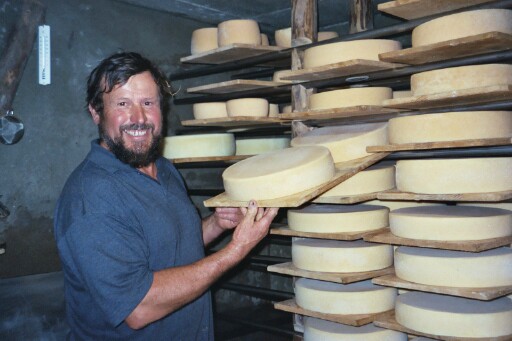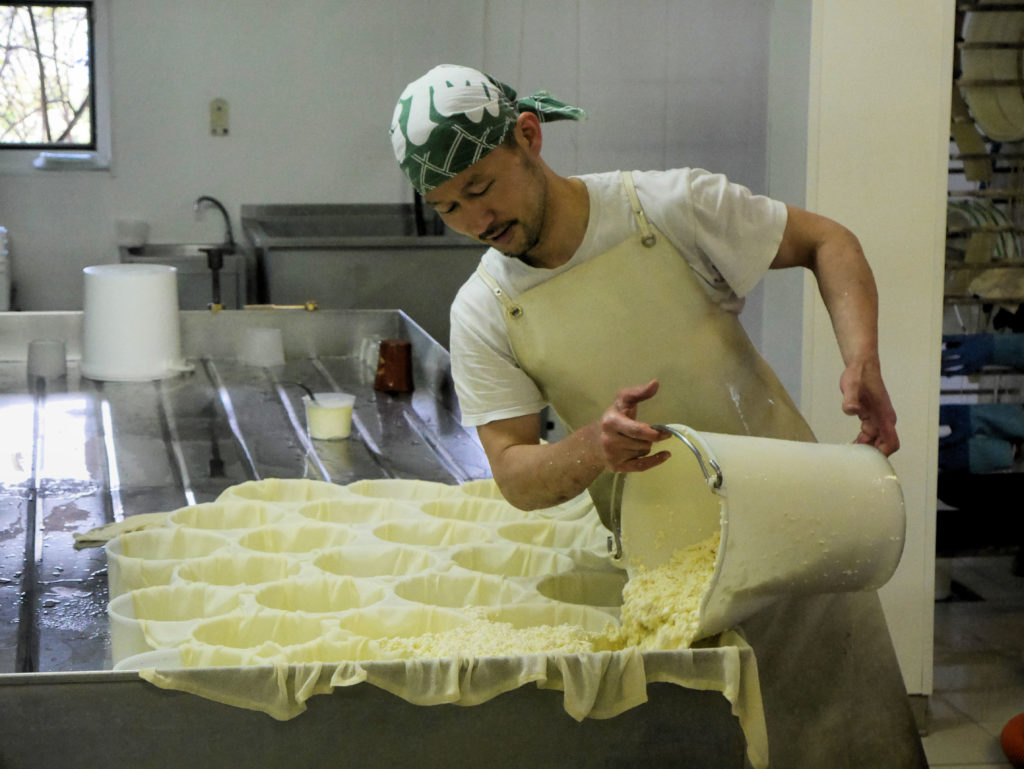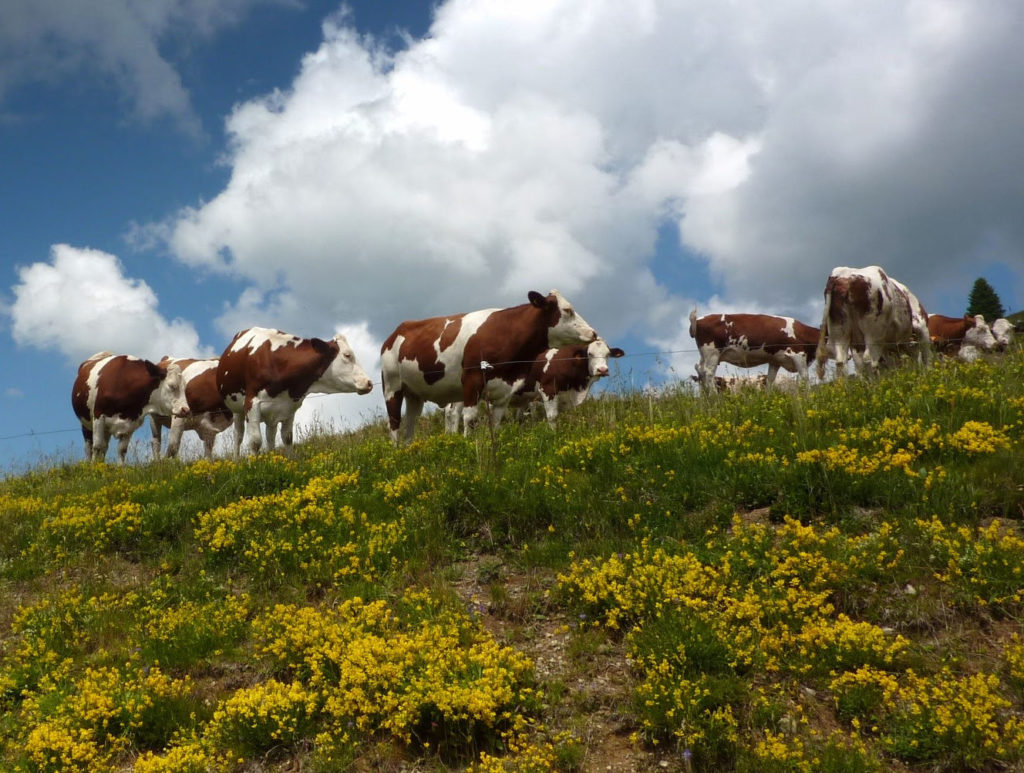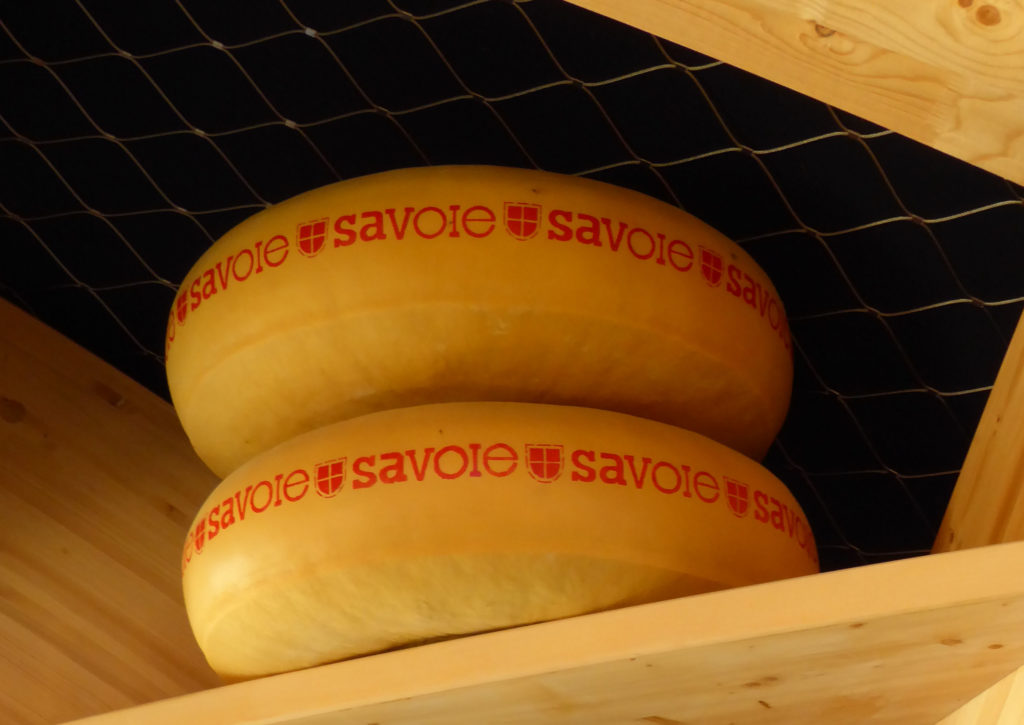Recently a local friend offered me some Abondance cheese. Although I love cheese, I normally avoid Abondance as I find it too acidic. However this Abondance was different, much smoother, creamier and less likely to remove the inside of my mouth. I asked if he knew why this cheese seemed so much nicer. He replied that it was because it was made from the milk of a cow that had been fed over winter. He explained that I had to go to the local market and explain to the artisan what I was after. It was a surprise (although perhaps it shouldn’t have been), that a cheese will taste different, depending on what the animals have been eating. Another sign we have lost the connection between the land and our food.

The changing seasons effects the flavour
Understanding how the changing seasons are reflected in the evolving flavours of the local cheese can be a real eye opener. Mountain cows spend 5-6 months indoors, normally being fed on grass cut locally and stored from the season before. This is a high calorie diet that leads to a rich creamy cheese. After the snows melt, the animals emerge from the farms and return to the fields for the new grass. The resulting spring milk sees fat and protein content drop. Spring cheeses tend to be lighter bodied. In late spring and early summer the grasses and wildflowers go crazy, and the grazing animals have a rich and varied diet. It should not be a surprise to note a floral taste in these cheeses.
At the end of September (or earlier if the weather dictates) they’ll be brought back down into the valleys for a short time before going back into their sheds
in November. It’s a system of farming known as transhumance. These changing flavours are not apparent in mass produced cheeses, the manufacturer’s adjust the fat and protein content to maintain a constant product. Local mountain producers make their cheese from the milk provided by their animals each day. To experience this seasonality you need to seek out a smaller, artisan cheesemaker. It’s the same with many foods such as honey and even bottled water. The trouble is we are fed blends of all these items from the supermarket and the subtle flavours disappear.
There are plenty of people in the Haute Savoie to whom the supermarket is a last resort, they may produce some of their own food, share and swap what they have with their friends, purchase from local producers at the farm door or in the market. For some cheese, ham, saucisson and various alcohols never come from the shops.
The cheeses you will find around the Haute Savoie.
Abondance, from the Vallée d’Abondance and the Abondance cow. Dates back to the middle ages and the Cistercian monks. The name of this cheese is protected, so it can only come from the Haute Savoie. The milk is first warmed in a copper cooking pot known locally as a “marmite”. Think of a pot of Marmite.

Beaufort, really a Savoie cheese, it comes from around Beaufort, but also extends through the Tarentaise right down to the Maurienne valley. The summer version of this cheese “Beaufort d’été” is easy to identify as it will be marked on the rind. It comes in huge 40kg “ronds”, made from lait cru, so unpasteurised milk.
Chevrotin, goats cheese from across the two Savoie’s, rich and creamy, comes in much smaller 300g packages.
Reblochon, from the Aravis in the Haute Savoie and the Val d’Arly in the Savoie, it dates back to the 13th century. Apparently the farmers in Thônes would milk their cows in front of their lords and pay their taxes on the milk produced. However they would not milk the udders dry, when they returned to their farms they did a “reblocher” (which in French means a second milking) and used the milk to make cheese. It is the main ingredient in Tartiflette.
Raclette, probably the most famous local cheese, but originally from our neighbours in the Valais, Switzerland. It is now not only produced all across the Alps but in the Auvergne, Franche-Comté and Bretagne regions of France as well as in Québec and even Australia! Raclette is made from cow’s milk, unpasteurised or pasteurised. It melts beautifully and has a mild flavour. Originally the farmers would cut one of the 6kg ronds in half, warm it over their wood fire and scrape the melting cheese onto their bread and potatoes. This is where the name comes from: “Racler” is the French for “scrape”.
Tomme, a mountain cheese, so found all across the French and Swiss Alps. Made from cow, sheep or goat milk. It’s identifying characteristic is that it is made from skimmed milk, the fatty milk having been used to make butter. Soft in texture and lightly flavoured with a distinctive ‘croute’.



